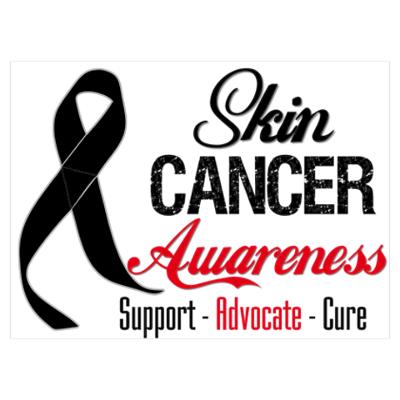Skin Cancer Awareness
Did you know that June, July and August are Skin Cancer Awareness months in Cayman?
Watch this impactful Video ‘How The Sun Sees You’
Listen to catchy tunes while applying Sunscreen: Sunscreen Dance Song
Teachers, here is an excellent resource: Rays Awareness
Raising Skin Cancer Awareness at Flowers Sea Swim 2015: http://www.cayman27.com.ky/2015/06/26/world-record-attempt-raises-awareness
Skin Cancer Awareness
By Victoria Anderson Grey
As Published in the Cayman Reporter on July 25, 2014
Skin cancer melanoma spot
Factors that increase the risk of developing skin cancer include:
• Ultraviolet (UV) light: Sunlight is the main source of ultraviolet (UV) radiation, which can damage the genes in your skin cells. UV light is thought to be the major risk factor for most skin cancers. Tanning lamps and booths are another source of UV radiation.
o The amount of UV exposure depends on the strength of the light, how long the skin was exposed, and whether the skin was covered with clothing and sunscreen. Many studies show that being exposed to a lot of sun when you are young is an added risk factor.
o People who live in places with year-round, bright sunlight have a higher risk. Spending a lot of time outdoors without covering your skin and using sunscreen increases your risk.
• Moles: A mole (the medical name is nevus) is a benign (not cancer) skin tumor. Certain types of moles increase a person’s chance of getting melanoma. The chance of any single mole turning into cancer is very low. But a person who has many moles is more likely to develop melanoma.
• Fair skin: The risk of skin cancer is much higher for whites than for dark-skinned African Americans or Hispanics. This is because melanin helps protect against UV radiation. People with dark skin have more melanin. People with fair (light-colored) skin that freckles or burns easily are at extra high risk.
• Older age: The risk of basal and squamous cell skin cancers goes up as people get older. Older people have been exposed to the sun for a longer time. Still, these cancers are now being seen in younger people too, probably because they are spending more time in the sun without protecting their skin.
• Men: Men are two times as likely as women to have basal cell cancers and about three times as likely to have squamous cell cancers of the skin.
• Chemicals: Exposure to large amounts of arsenic, a heavy metal used to make some insecticides, increases the risk of skin cancer. Arsenic is also found in well water in some areas. Workers exposed to industrial tar, coal, paraffin and certain types of oil may have an increased risk too.
• Radiation: i.e. having had radiation treatment. This can be a problem for children who have had cancer treatment.
• Having had a skin cancer
• Certain long-term or severe skin problems: Scars from bad burns, areas of skin over bad bone infections and skin damaged by certain skin diseases.
• Psoriasis treatment: Having had psoriasis (a long-lasting inflammatory skin disease) treated with psoralen and ultraviolet light treatments (PUVA) can increase risk of squamous cell skin cancer, and maybe other skin cancers, too.
• Family diseases
o Xeroderma pigmentosum: a very rare disease which tends to run in families – it makes the skin less able to repair sun damage. People with this disease get many skin cancers, sometimes starting in childhood.
o Basal cell nevus syndrome: This rare condition is present at birth. It causes some people to have many basal cell cancers. It often runs in families.
• Weakened immune system: People with weak immune systems are more likely to develop non-melanoma skin cancer. Skin cancers in people with weak immune systems tend to grow faster and are more likely to be fatal.
• HPV infection: A small number of skin cancers seem to be linked to infection with human papilloma virus (HPV).
• Smoking: Smoking is a risk factor for squamous cell skin cancer.
• Genetics: Scientists have found that certain people are more likely than others to develop skin cancer after sun exposure. In these people, certain parts of the normal cells are more sensitive to being damaged by sunlight.


